
‘Software at Work’ built its business around high-touch consulting matching SME owners in Tier II/III cities with the right software through 1:1 scoping conversations. Each engagement relied on an in-house advisor who interpreted vague pain points (e.g., stockouts, delayed receivables) and curated a shortlist of vendors.
Despite strong conversion, this model faced 2 macro-level constraints:
Human-led consulting was becoming operationally constrained
As enterprise software ecosystems expanded, it became increasingly unviable for individual consultants to stay updated across categories. Bandwidth limitations, upskilling challenges, and regional dependency made the model difficult to scale without exponentially increasing headcount.
Discovery platforms lacked decision-making utility
Marketplace sites offered breadth but failed in depth. With opaque ranking algorithms and limited contextual guidance, SME buyers (especially in non-metro markets) struggled to move from pain points to informed product choices.
The core ask: “Codify our expertise into a product that can run 24/7, maintain the integrity of our advice, and decouple growth from headcount.”
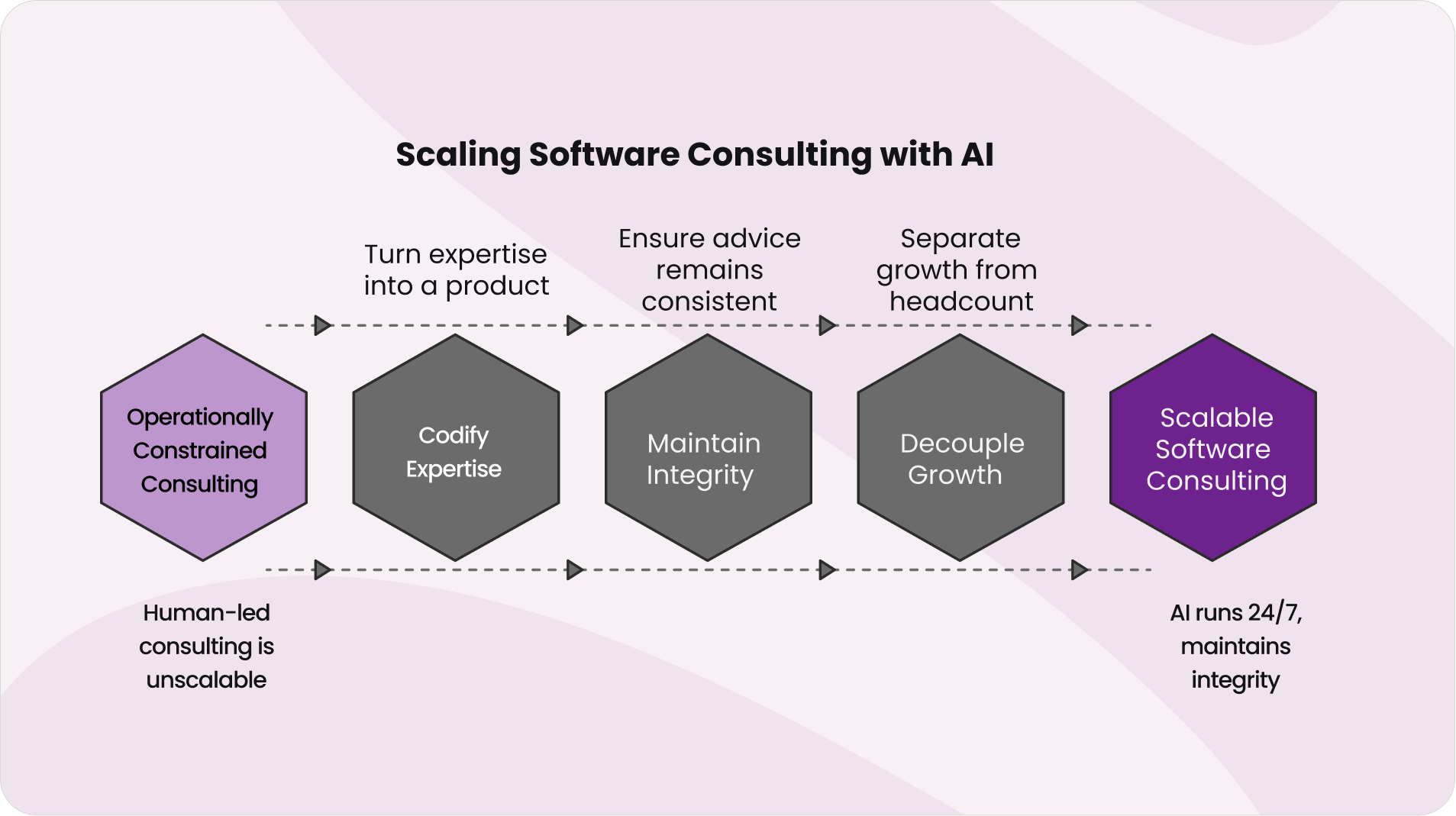
Our first step was to translate kmjs manual workflow into a structured, insight-led product system. We identified four core problem spaces:
Segmentation Logic:
Competitive Analysis:

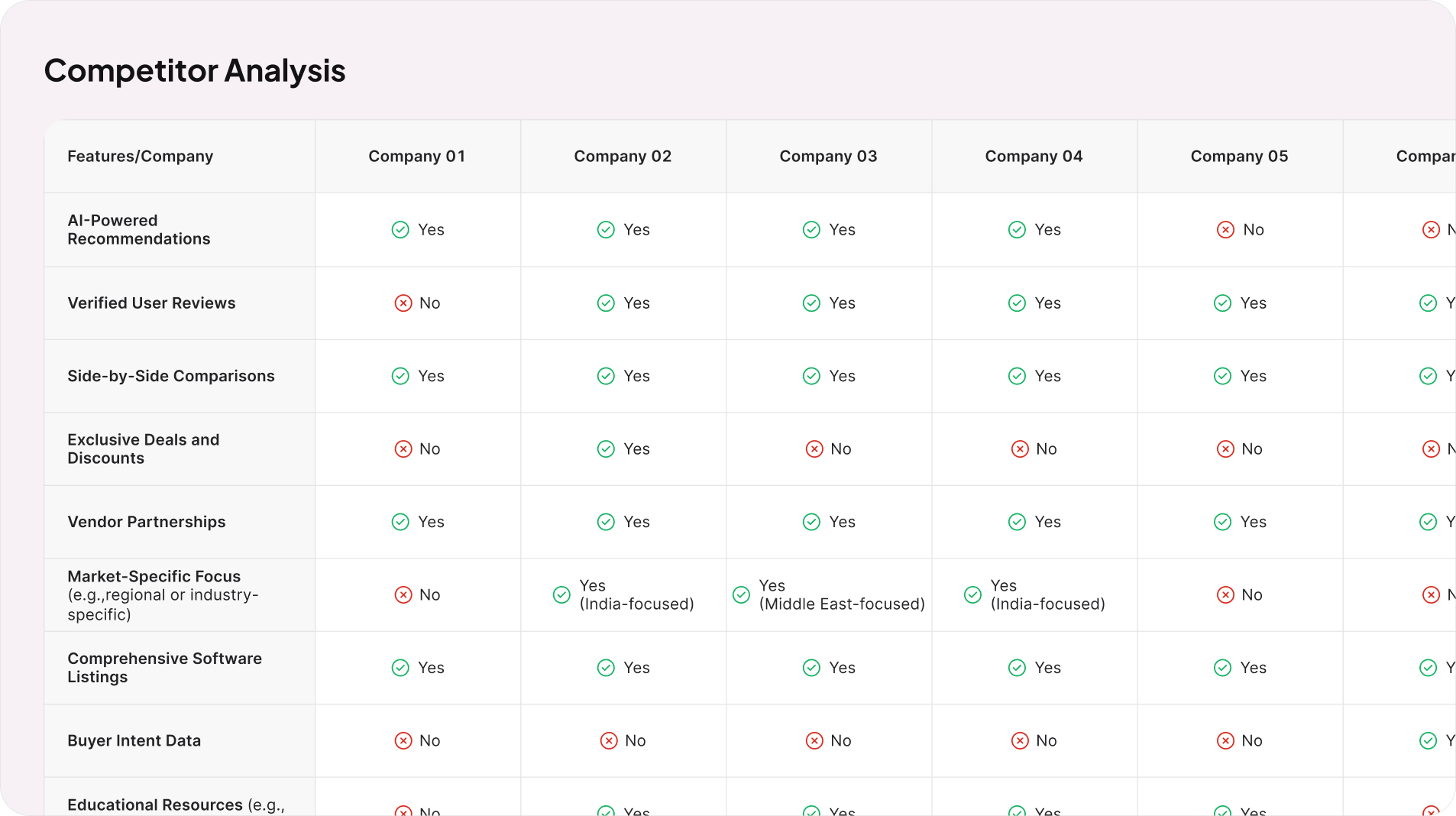
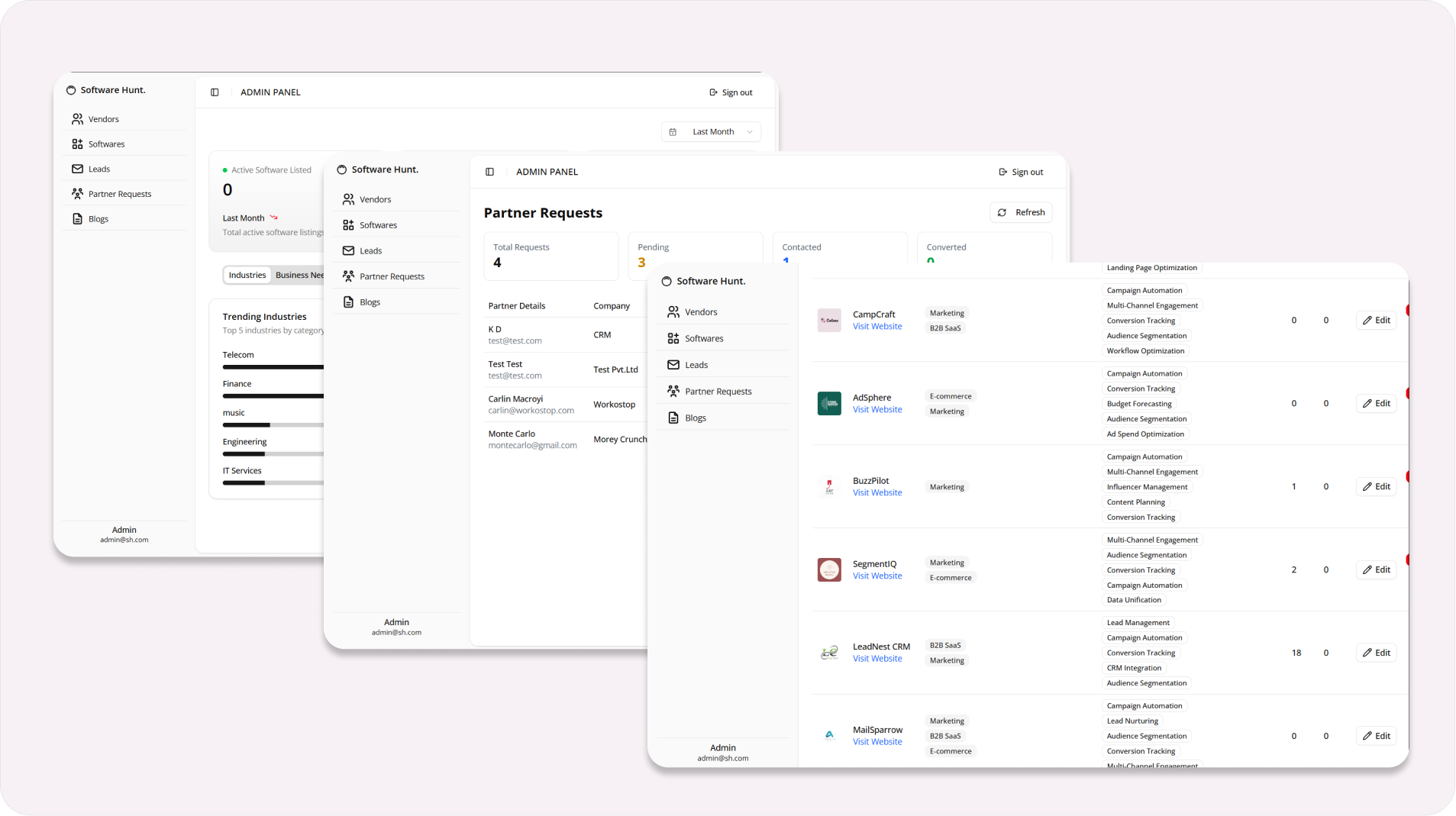
UX Interviews: We conducted structured interviews with internal consultants, SME buyers, and software vendors to map behavioural roadblocks in the discovery process. Three consistent friction points emerged:
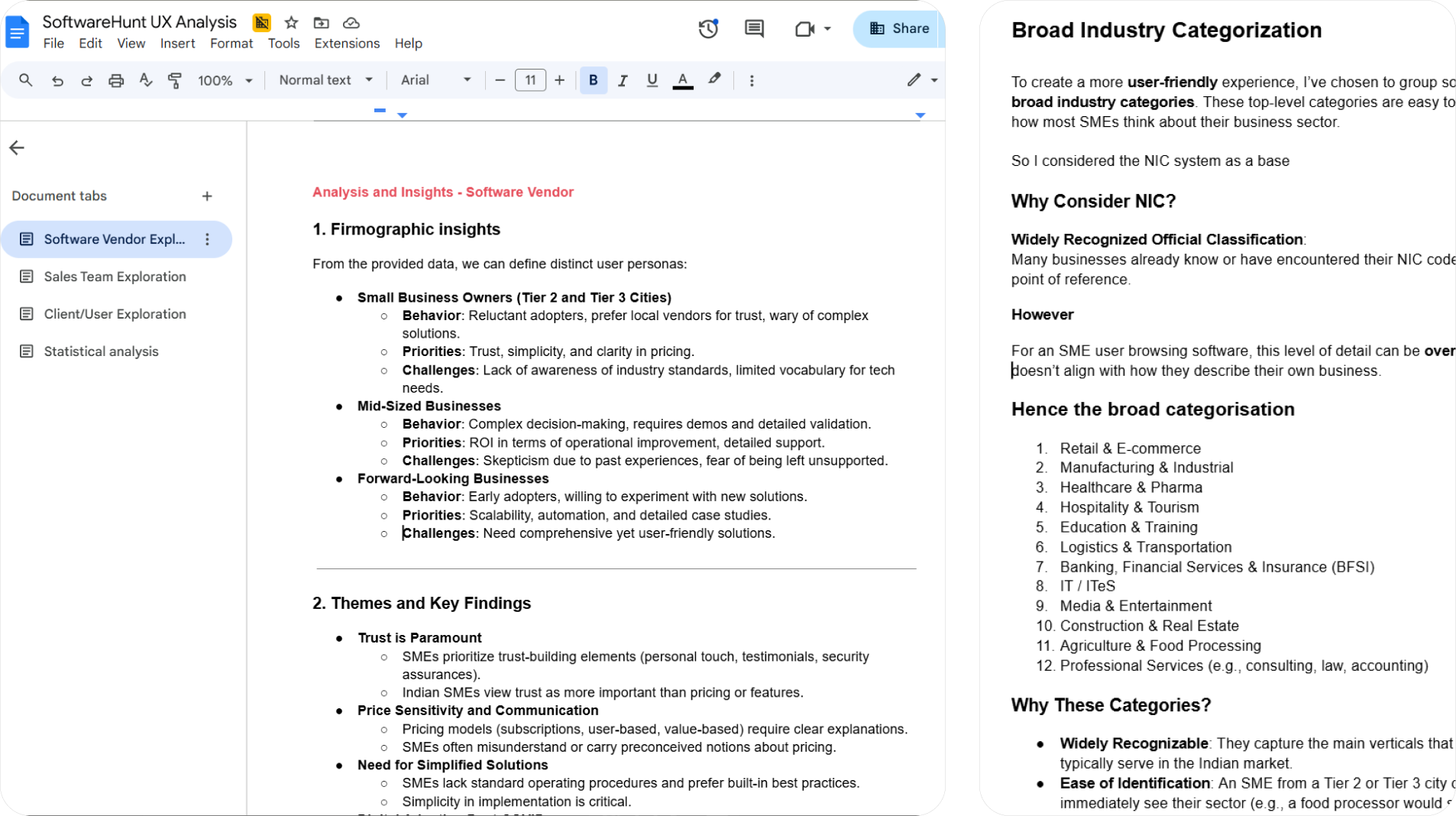
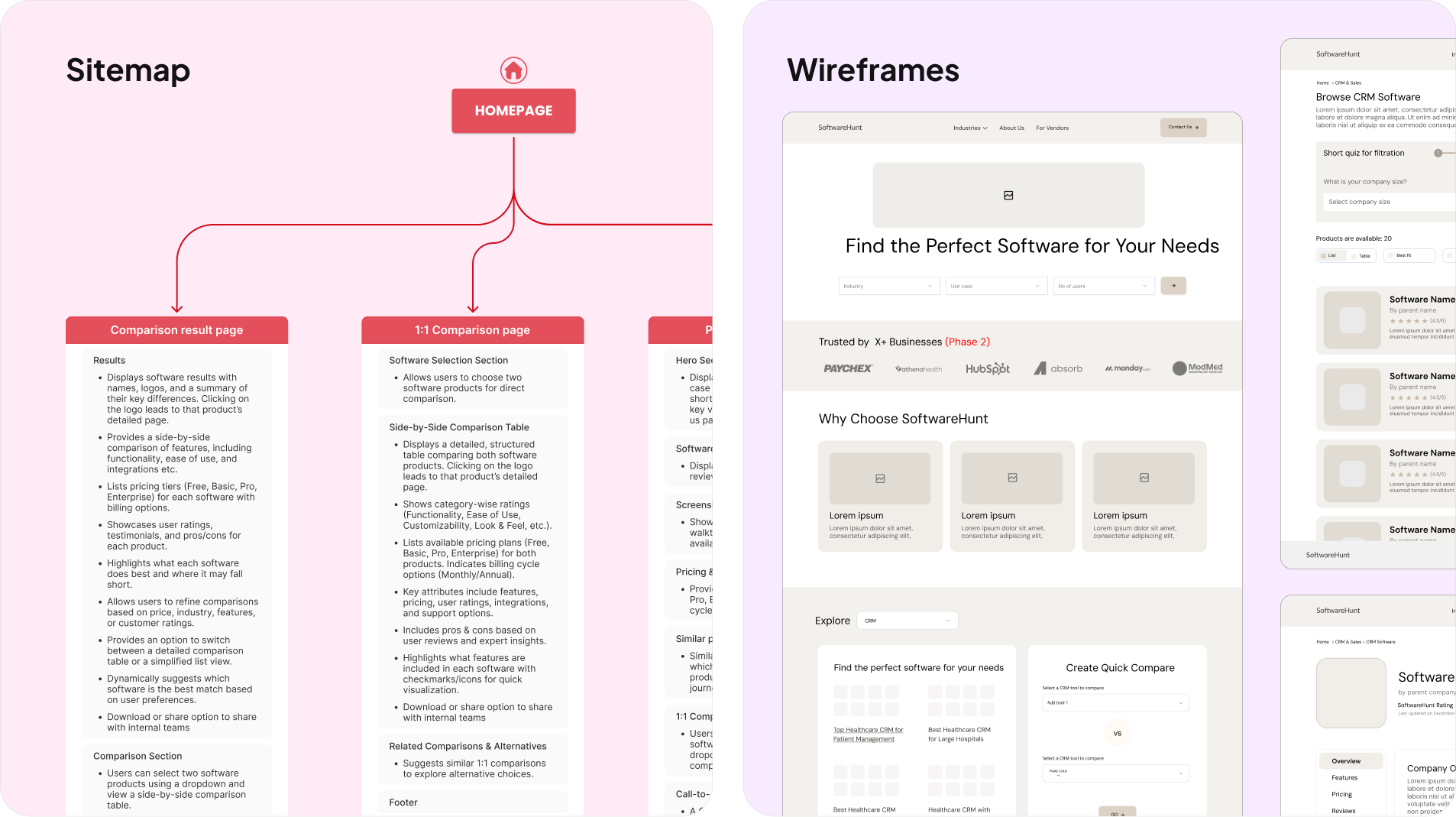
Persona Matrix: We synthesised interview findings into four distinct behavioural archetypes:
Each persona informed tone, interface design, and copy strategy.

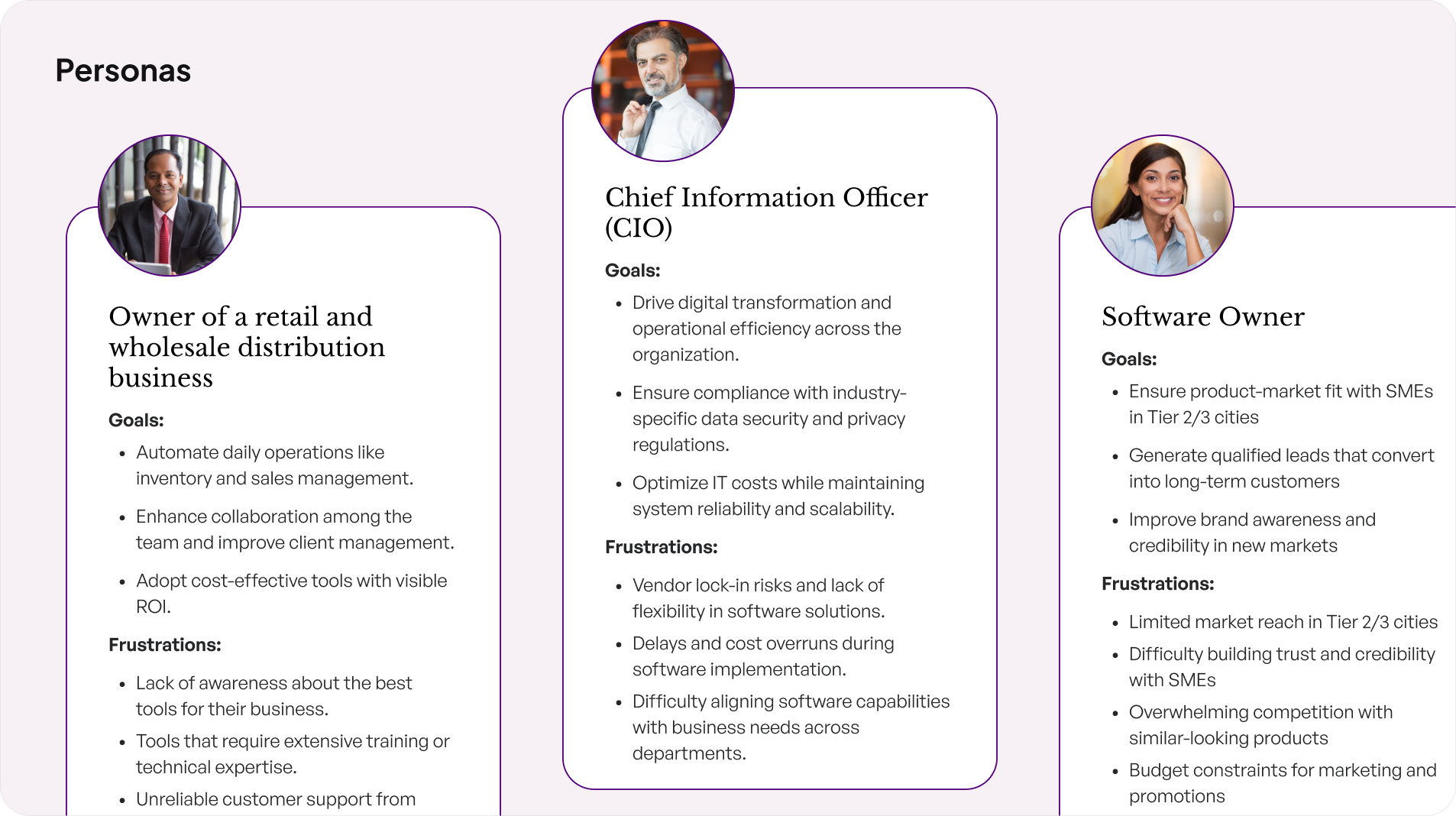
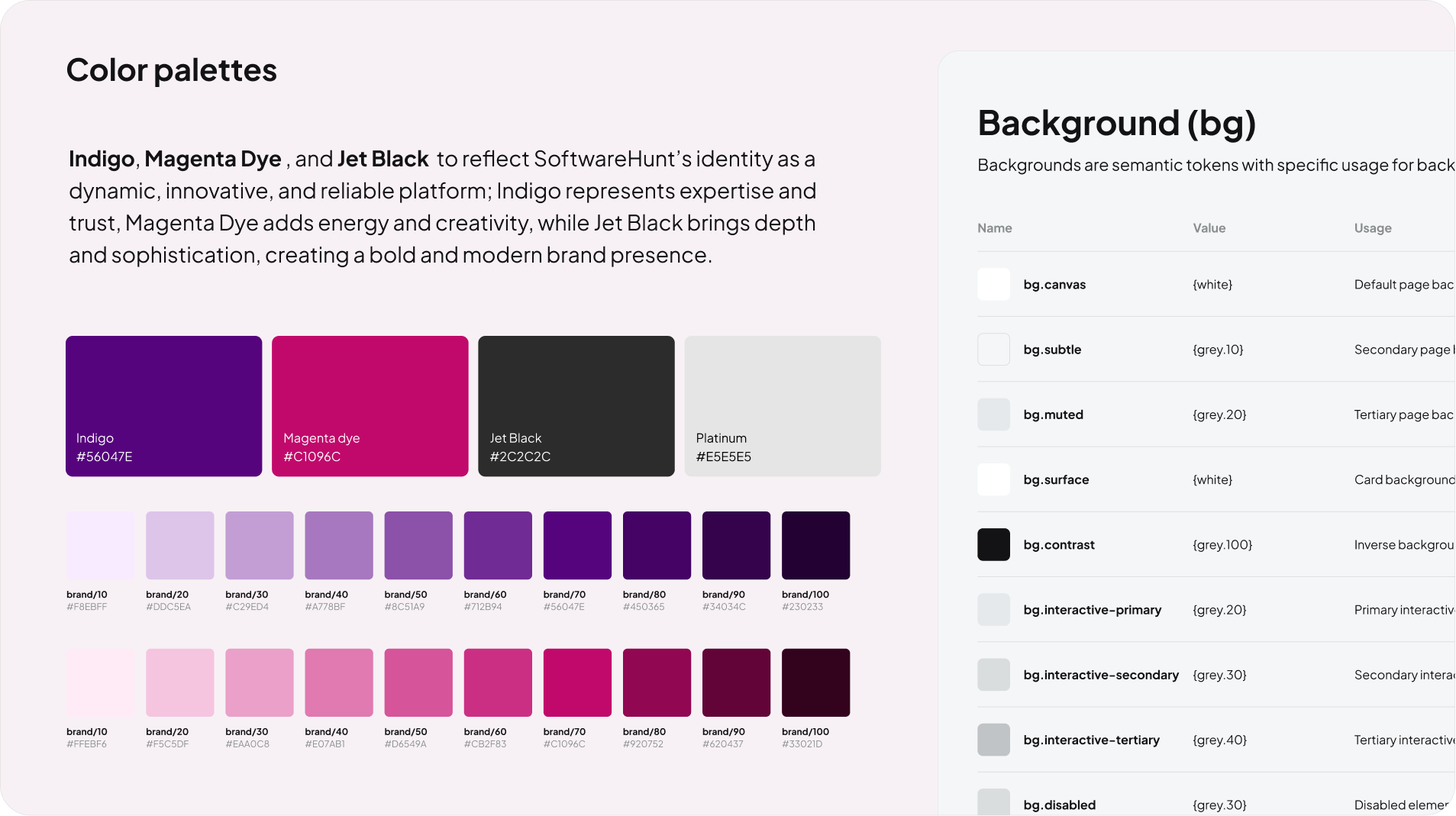

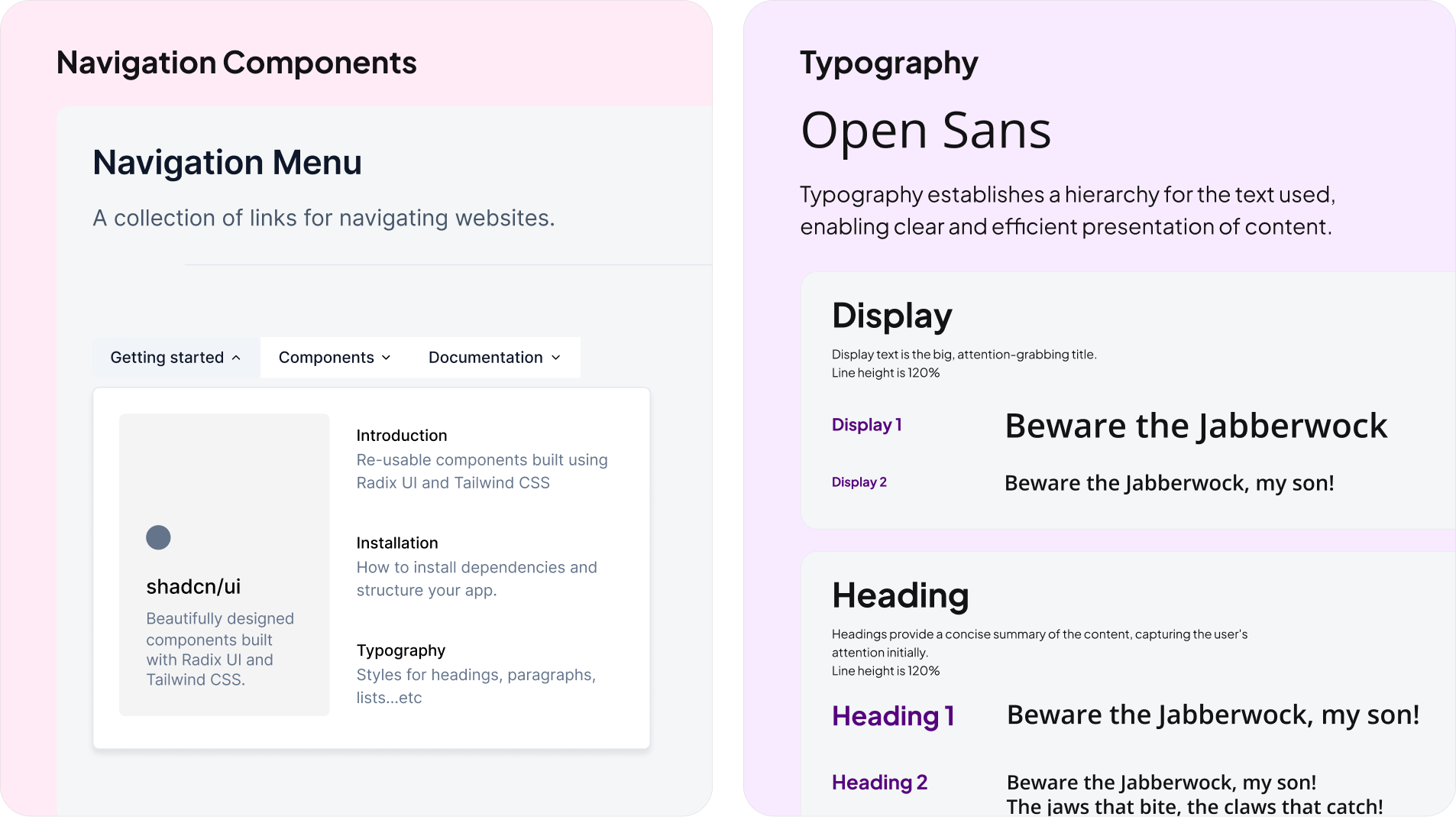
Data Architecture: We developed a flexible entity-relationship model to support evolving buyer inputs and scalable recommendation logic. Four key entities formed the foundation:
This helped us:
System Design:
We designed the diagnostic flow to mirror how real buyers think
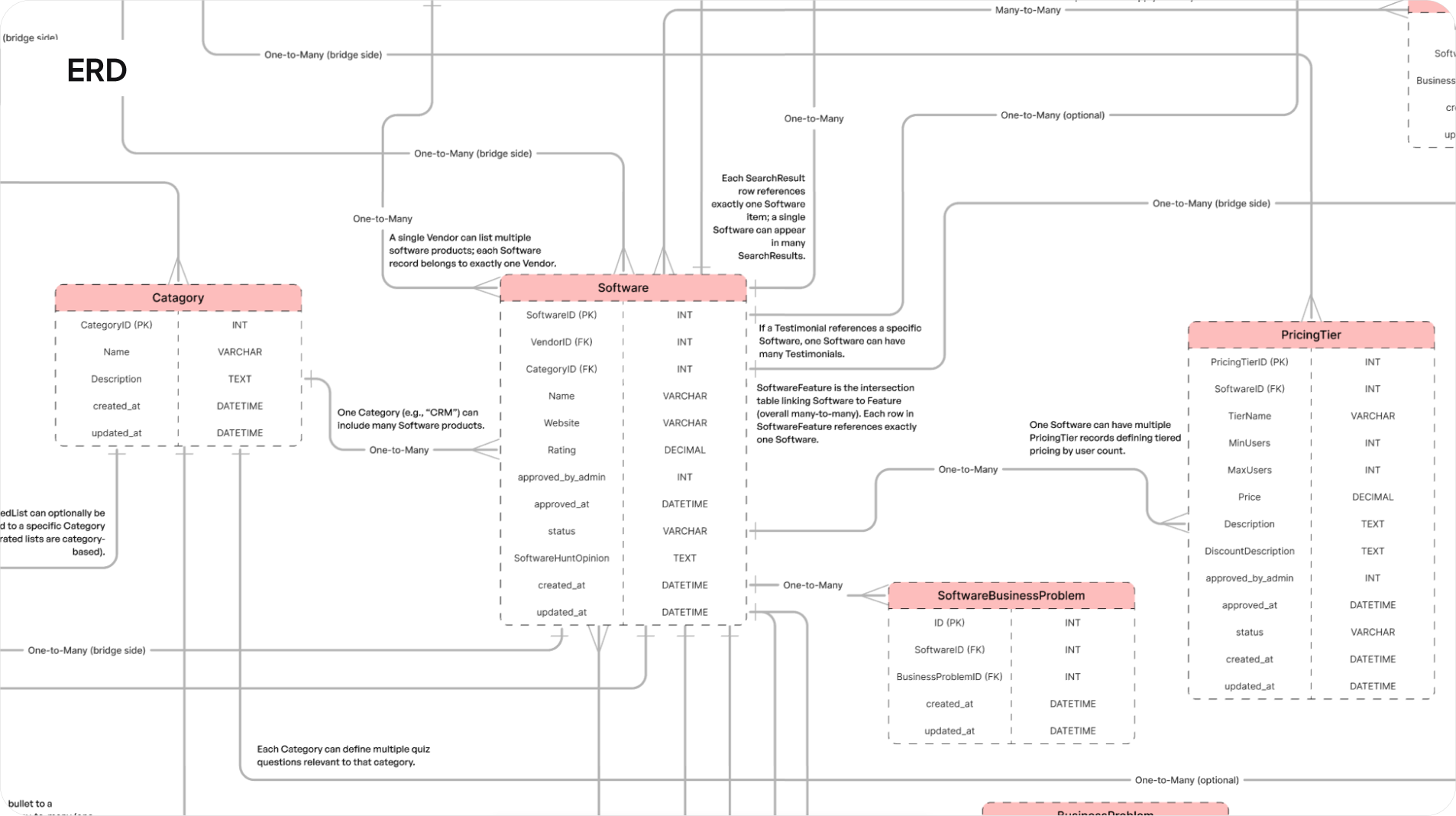
Transitioning from a human-intensive consulting model to a guided, product-led platform set the stage for structural transformation across SH’s operations:
Operational Leverage
The platform enables automation of lead scoping and qualification, freeing consultants to focus on high-value interactions and late-stage conversions.
Buyer Enablement
SME owners can move from vague pain points to a curated shortlist of vendors within a single, guided session
Vendor Alignment
Static listing models can be replaced by performance-linked lead generation, improving alignment of incentives and increasing vendor retention over time.
Scalable IP
SH’s proprietary diagnostic logic is now codified into a modular, extensible platform architecture - future-ready for scale across markets, languages, and user segments.

